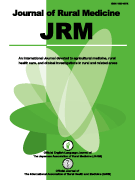Volume 17, Issue 4
Displaying 1-15 of 15 articles from this issue
- |<
- <
- 1
- >
- >|
Original Article
-
2022 Volume 17 Issue 4 Pages 196-204
Published: 2022
Released on J-STAGE: October 22, 2022
Download PDF (746K) -
2022 Volume 17 Issue 4 Pages 205-213
Published: 2022
Released on J-STAGE: October 22, 2022
Download PDF (632K) -
2022 Volume 17 Issue 4 Pages 214-220
Published: 2022
Released on J-STAGE: October 22, 2022
Download PDF (607K) -
2022 Volume 17 Issue 4 Pages 221-227
Published: 2022
Released on J-STAGE: October 22, 2022
Download PDF (2958K) -
2022 Volume 17 Issue 4 Pages 228-235
Published: 2022
Released on J-STAGE: October 22, 2022
Download PDF (591K) -
2022 Volume 17 Issue 4 Pages 236-247
Published: 2022
Released on J-STAGE: October 22, 2022
Download PDF (2564K) -
2022 Volume 17 Issue 4 Pages 248-254
Published: 2022
Released on J-STAGE: October 22, 2022
Download PDF (874K)
Case report
-
2022 Volume 17 Issue 4 Pages 255-258
Published: 2022
Released on J-STAGE: October 22, 2022
Download PDF (1491K) -
2022 Volume 17 Issue 4 Pages 259-261
Published: 2022
Released on J-STAGE: October 22, 2022
Download PDF (1036K) -
2022 Volume 17 Issue 4 Pages 262-264
Published: 2022
Released on J-STAGE: October 22, 2022
Download PDF (1347K) -
2022 Volume 17 Issue 4 Pages 265-269
Published: 2022
Released on J-STAGE: October 22, 2022
Download PDF (760K) -
2022 Volume 17 Issue 4 Pages 270-275
Published: 2022
Released on J-STAGE: October 22, 2022
Download PDF (2072K)
Letters to the editor
-
2022 Volume 17 Issue 4 Pages 276-
Published: 2022
Released on J-STAGE: October 22, 2022
Download PDF (469K) -
2022 Volume 17 Issue 4 Pages 277-278
Published: 2022
Released on J-STAGE: October 22, 2022
Download PDF (485K) -
2022 Volume 17 Issue 4 Pages 279-282
Published: 2022
Released on J-STAGE: October 22, 2022
Download PDF (678K)
- |<
- <
- 1
- >
- >|
